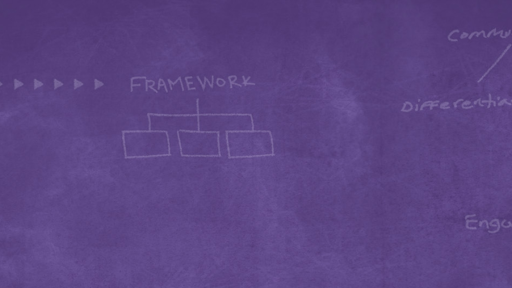This year’s HRO Today Forum was met with anticipation and buzz around the show’s theme: The “Future” … Are We There Yet? Many of the conversations surrounded the talent shortage, and recruiters’ constant struggle to find the right talent and get them in the door. As one recruiter said, “Recruiting right now is all about the right job, for the right person, at the right time.”
Competition is fierce and many applicants may now have four to five job offers on the table at a time.
Cielo leaders were well represented at the Forum. We sponsored, presented, exhibited, and celebrated, as our very own Molly Thiel was a finalist for CHRO of the Year. It was great to be back face to face with our client partners and peers learning how to navigate the ever-changing HR and talent acquisition landscape.
Due to the “great resignation” and talent shortage, another hot topic to expand on is retention, retention, retention. High turnover rates can be expensive and prohibit your organization from reaching sales and growth objectives. Developing an effective employee retention strategy boosts satisfaction rates and ultimately decreases turnover. Here are some tactics that many organizations are implementing to keep employees “home”:
1. Upskilling & reskilling
Upskilling is focused on helping employees become more knowledgeable and develop new skills that relate to their current position, while reskilling is about equipping employees to change course and move into new roles within their organization. Both are effective strategies to combat a perennial skills shortage. Research points to upskilling and reskilling as prerequisites for success, and The World Economic Forum predicts that half of all employees will need reskilling by 2025 as adoption of technology increases.
These initiatives require a significant investment in both time and money, and some might even wonder whether it would be easier to prioritize external hiring. While it might sound like a simpler strategy on the surface, turning to new talent won’t solve your skill-building concerns. In today’s record-breaking labor shortage, finding the right talent has proven to be exceptionally difficult. The only way to prepare your organization for the future of work is by putting skills at the center of your strategy.
2. Training & development
According to HR experts, pay alone does not affect employee motivation. Other factors such as training and development programs can lead to increased retention rates. Employees want to feel empowered, wanted, and ultimately satisfied with the work they are doing and the value they bring to the company.
A big emphasis for overall talent development should also be on soft skills, such as leadership, communication, collaboration, and time management. These skills are vital for organizational success because they directly affect how an employee does their job and how well they interact with colleagues and customers.
An employer who does not focus on learning is going to lose out on performance, engagement, and retention. According to a LinkedIn Workforce Learning Report, a staggering 93% of employees would stay at a company longer if it invested in their careers. Training programs are no longer an optional perk or reserved for only certain positions. They are expected by today’s talent.
3. Stay interviews
A stay interview is an interview conducted with current employees to assess their job satisfaction as well as why they are staying with your company. It’s important to come up with questions that tie to the overall goal - to learn what makes your company a good place to work as well as what may need improvement to increase employee retention.
VNA Health GroupThe employees appreciate having a forum where their voices are heard and then seeing some of that feedback turned into action.
Here are some benefits of conducting stay interviews:
- Helps to build trust with your employees
- Shows your employees that you care about their satisfaction
- Increases communication
- Gives you viable information to make positive changes
- Provides you with patterns and data related to employee turnover rates
Speaking with one of our customers on this topic, Adam Shandler, Director of Learning & Development and Talent Acquisition at VNA Health Group stated, “Stay-Interview focus groups at the VNA have been helpful in creating more action around retention. There are themes we’ve gathered in those sessions that you don’t get as much depth on in engagement surveys. For instance, hearing about the impact of the staffing issues and sharing those pain points with the managers has incited some incremental hiring. The employees appreciate having a forum where their voices are heard and then seeing some of that feedback turned into action.”
4. Corporate culture
To compete for top talent as well as retain it, your organization needs to have an Employee Value Proposition (EVP) that resonates with employees and candidates. EVPs are critical to forming the foundation upon which your brand, internal retention and external recruiting efforts are built. To achieve optimal success, businesses must have an adequately informed, engaged, and motivated workforce. Your EVP is essential to attaining and retaining such a workforce. Here are a few reasons why:
- It is central to creating value for your business. Put simply, an engaged workforce will care more, contribute more and sell more than a disenchanted and demotivated workforce.
- It enables you to compete more effectively for talent. In a crowded and competitive marketplace, you need to stand for something to stand out and attract the right people. Your EVP is your ticket to differentiation.
- It informs your employer branding and attraction campaigns. Your EVP will drive the strategic and creative thinking that enables you to stand out. It is the nucleus of your messaging.
- It reduces time and money spent on recruitment. A clear EVP helps candidates make an informed decision about whether to apply for a role, which reduces time and money spent on poorly matched applicants and reduces attrition over the long run.
- It informs your HR policies and procedures. By providing a blueprint, you are clearly communicating how things are done in your organization, how people treat each other and how to create value for customers and stakeholders.
- It helps keep your business honest. Stay true to your EVP and your employees will amplify your positive messaging, reinforcing your reputation as a good employer. Let them down and the consequences can damage not only your employer brand, but also your consumer and corporate brand.

The bottom line, literally
A study by the Society for Human Resources Management (SHRM) states that replacement costs alone can be as high as 50%-60% of that employee’s annual salary, with overall costs ranging anywhere from 90%-200%! Not only does attrition hit your bottom line, but high turnover rates can also impact company culture, productivity, engagement, and overhead costs.
When deciding which retention strategies to use for your business, it’s important to analyze your workforce and consider how you do business. Talk to your employees to get a feel for what might make them stay or changes they’d like to see. The things they value most may help you determine your biggest areas for improvement.
It’s important to remember that a long-term commitment requires effort on both sides. Of course, some employees will leave your organization, but if you expect and hope that employees will make a long-term commitment to your company, it will be equally vital that you give them good reasons to stay.
About the expert

Chief Operating Officer, Cielo
As Chief Operating Officer, Molly enables Cielo’s mission by ensuring we have the best talent positioned to provide excellent client service. She oversees talent acquisition, talent management, learning & development and HR operations for Cielo’s global operations.
LinkedIn connect





